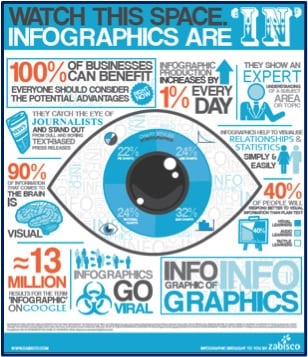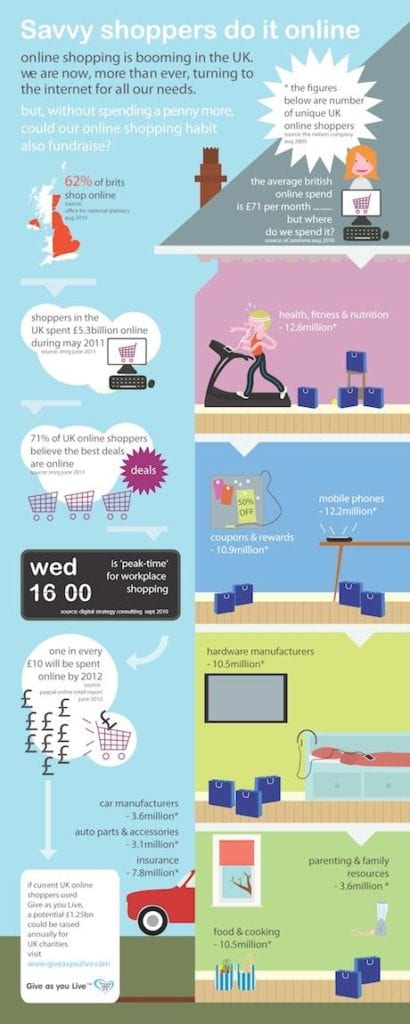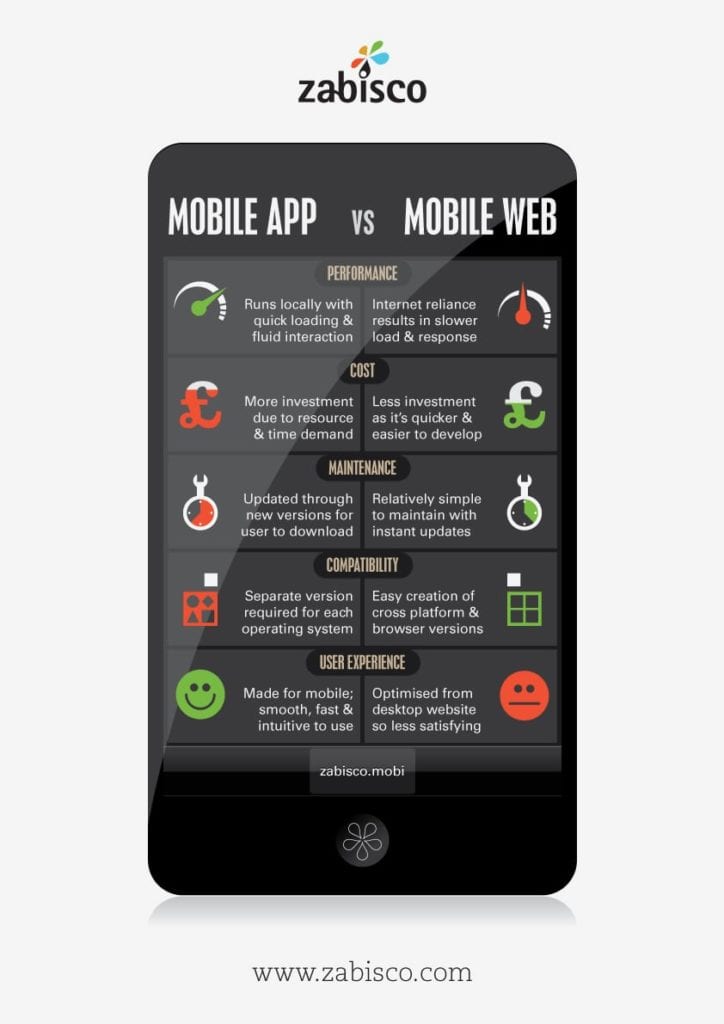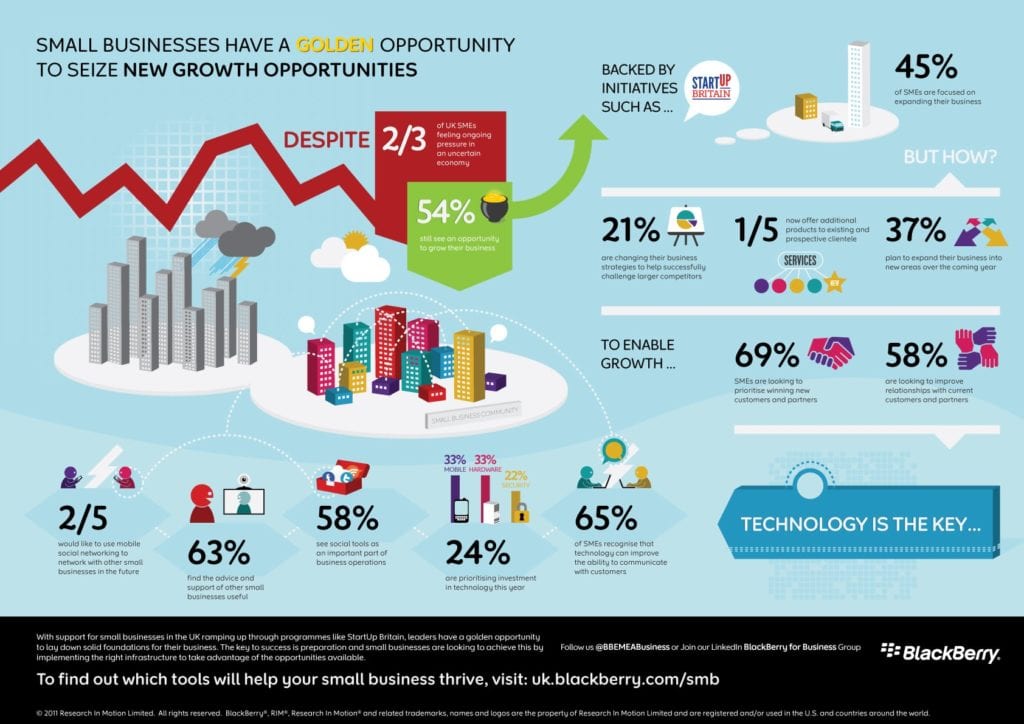 |
| Laura Hampton |
It’s a bold statement to suggest that we all need infographics. But the fact of the matter is: They work. Far removed from the press releases and long text stories of old, infographics are the ideal medium to get the attention of editors and express the expertise and personality of a brand.
Infographics are by no means a new idea. Indeed, the concept of visual communication is the foundation of today’s design work, particularly when we talk about the Internet and the way users digest information given to them online. It’s important to remember that the typical Internet user is not likely to appreciate long blocks of text; they will tend to gravitate toward more visual material.
The “Infographic of Infographics” below shows many of the benefits of infographics from a user’s point of view. In terms of how people learn, visual stimulants are the key input for around 40% of the adult population (Teaching Students to Read Through Their Individual Learning Styles, by Marie Carbo, Rita Dunn, and Kenneth Dunn; Prentice-Hall, 1986, p.13), making infographics a really good method of outlining key concepts of a business or explaining complex ideas or relationships.
 |
| The infographic above shows the many benefits of—you guessed it—infographics. Source: www.zabisco.com |
All of this is clearly good news for the user, and anything that will enhance the user experience is something we should all consider a valuable asset. But, as we all know, in PR, the benefits of any mode of delivery have got to be tangible and evident for the businesses and brands they represent.
Stand Out From the Crowd
Creating content that will stand out from the crowd is a key consideration in PR because editors and influencers are inundated every day with text-based press releases and requests for editorial coverage.
The difference between a press release and an infographic is that infographics stand out. They’re something different and they’re something that take thought and time to be created. Designed and executed well, they say you have fully considered you target audience and invested the time in creating an engaging piece of content because it was worth doing.
That’s not to say that a press release cannot work; the PR industry has been using press releases for years with great success. Ideal for spreading quick and time-sensitive news and information, they are no doubt a medium that will remain.
But where an idea is complex or based on statistics or relationships, an infographic can make a real impact on the editors you are trying to reach.
 |
| Give As You Live used this infographic to show how shoppers behave online, taking potentially dull statistics and making them engaging and interesting. It was later featured in the Guardian. Source: http://giveasyouliveblog.com |
Considering the AVE
Standing out is not the only benefit of using infographics in PR. Another key consideration, especially when reporting back to clients on the advertising value equivalent of their investment, is the amount of coverage your content can generate.
The immediate implication of this with infographics is their size. Large or small, there’s only a certain amount of cropping or reducing an editor can do without compromising the quality of the image and the value it gives to their end user. Unlike written copy, an infographic cannot be spliced and diced and, for this reason, is more likely to command larger portions of a Web page or magazine.
In the longer term, the viral potential of infographics is huge. Because they are so visually appealing and content rich, infographics are shared by users every day across the Internet. This means your infographic is not only featured in the one place you intended, but across various and limitless other sources. This will also be beneficial for your client’s search engine optimization (something that should be a big part of PR thinking) as the more links you get back to your client’s Web site as the source of the infographic, the better they will rank in results pages.
Consider the viral potential when creating your infographic—think "is this useful" and "is this relevant"; if the answer to both is yes, people will share it. Imagine the AVE of that.
 |
| This "Mobile Web Sites vs Mobile Apps" infographic has been featured across the Web, even making it into Econsultancy’s “Ten Mind Blowing Infographics” in 2011 and securing its creator an increase in leads related to mobile Web site and app development. Source: www.zabisco.com |
Expertise and Forward Thinking
PR is all about reputation and managing the opinions that your client’s target audience has of their brand.
Infographics can contain an abundance of information and therefore give you the opportunity to really showcase the expertise of the brand. Make your client the go-to source of information with an infographic, and the comment and content opportunities will be limitless.
And it’s not just expertise that will be communicated. It is well understood, particularly in online arenas, that infographics are becoming more and more a part of content marketing, so editors and influencers will be on the lookout for them. Show that you’re forward thinking enough to create them and give your contacts something to showcase on their own site.
 |
|
BlackBerry showcased its own expertise in small business development with this infographic, which was also featured by small business Web site Smarta, thus solidifying BlackBerry’s position as an expert in the field. Source: http://uk.blackberry.com
|
This article was written by Laura Hampton, who held the position of head of content engagement at user-experience agency Zabisco. Read more from the team in the Zabisco blog. For more information regarding Zabisco’s PR & marketing, contact Fran McVeigh.
